This Issue (Volume 3 / Issue 1)
Chairman’s Message p. 2

MER Executive Committee
Major Responsibilities
Major
Responsibilities
• Organize the MEMO (Maintenance/ Engineering Mine Operators) Conferences in conjunction with other Society, the hosting CIM Branch, and CIM National
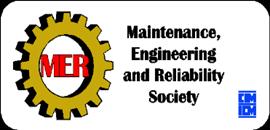
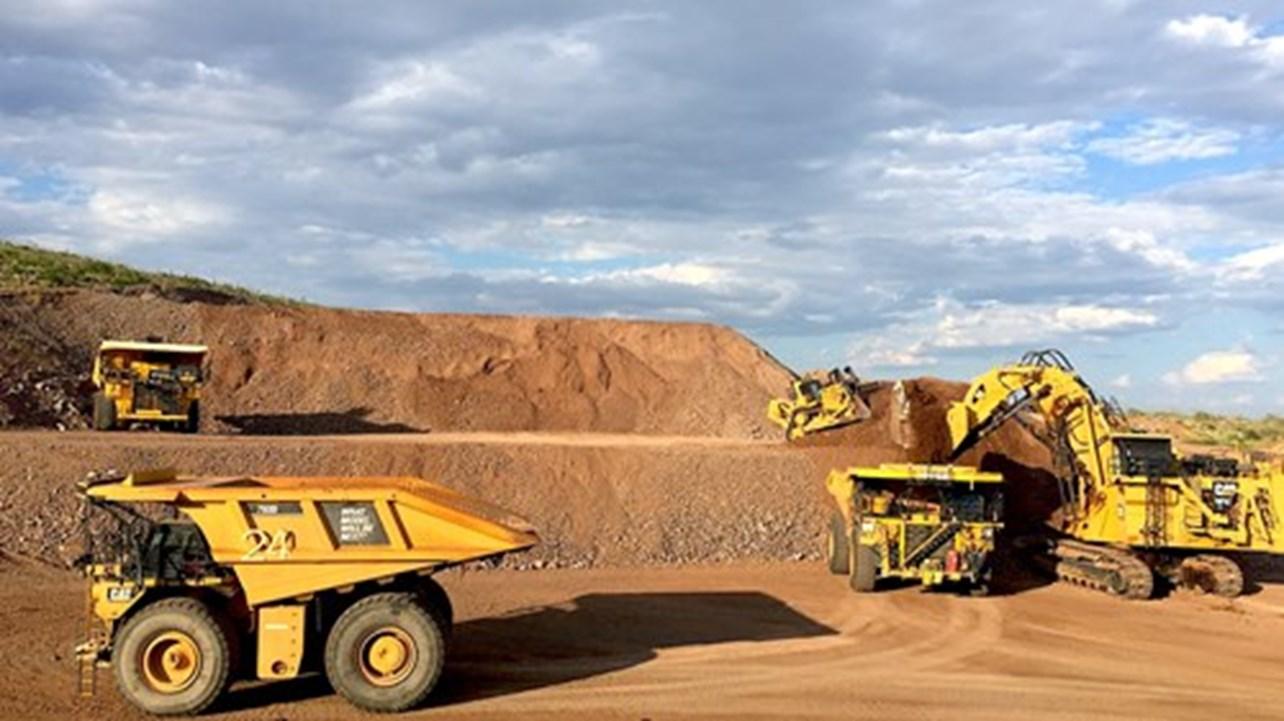

•
• Administer awards and scholarship programs • Provide peer review of technical papers for publication
This Issue (Volume 3 / Issue 1)
Organizing the MEMO (Maintenance/ Engineering Mine Operators) Conferences, in conjunction with other Society, the hosting CIM Branch, and CIM National Promote, chair, and solicit papers for Technical Sessions at the CIM Conference & Exhibition Administering awards and scholarship programs Providing peer review of technical papers for publication
LoadIQ Smart Sensor Technology p. 3 4
Increasing asset reliability the mining industry through digital strategies p. 5 8
The mechanics of a new era in Maintenance p. 9 12
The Strength of the MER Society p. 12
CIM MER Objectives & Historical Background p. 13
CIM MER 2021 Scholarship Winners p. 14 15
CIM Journal Paper Submission p. 16
Peer Reviewed MER Abstracts p. 17
MER Executive Members 2022 2023 p. 18
Calendar of Events p. 18
MER Executive Committee
Promote, chair, and solicit papers for Technical Sessions at the CIM Conference & Exhibition
Chairman’s Message
Dominique Privé, ing. M. Sc Président

We are finally emerging from several difficult years with the Covid 19 global pandemic and are once again able to participate in important meetings such as the CIM 2022 AGM Conference in Vancouver and MEMO in Sudbury. These conferences allow our members to meet and discuss the challenges of the future.


Speaking of challenges, we all face labour shortages. We can partly overcome this problem by improving our practices, processes, and technologies to be as efficient as possible.

Moreover, the digitization of data as well as Industry 4.0 are increasingly present in our Organizations, and several new applications are now available to us.

Therefore, we realize the need to learn more and share our experiences in order to face future challenges. This is why the CIM MER Society Executive members over the coming years plan to increase communications with their members and share knowledge via webinars, newsletters, articles, and blogs on various networks such as the MERS Website, the MER Today Publication, and Linked In.
In addition, we must not forget that behind any change, there is a person, and this must be at the heart of our business decisions in our respective organizations.
I would like to take this opportunity to wish you a happy holiday season and a Happy New Year 2023!
2 | MER Today Winter 2022
CIM MER Executive Committee Member’s Corner
LoadIQ Smart sensor technology
ore trajectory in real time. It then combines this reading with data about the ore type and liner profile to determine the optimum mill load. Mill operating parameters are then automatically adjusted in real time as grinding conditions change.
LoadIQ can also be configured as a standalone solution, where it will send a suggested load target and RPM to the operators or existing expert system.
LoadIQ: Intelligent mill loading for optimum performance

Maximise throughput for all grinding conditions
Web Site FLSmidth]
Optimal mill loading with smart sensor technology
Optimal mill loading ensures you are making the most efficient use of your grinding mill but in the past, it has been difficult to calculate the optimal mill load with precision. Not anymore. KnowledgeScape™ LoadIQ™ utilises our mill scanner smart sensor technology to determine the optimum mill load, increasing throughput by 3 6%.
Maximum grinding efficiency, with minimum effort
You don’t need to upgrade your grinding mill to increase capacity you just need to make the most of the system you have. With LoadIQ you can optimise mill load using a system of smart sensors and AI software. Typical throughput increases of 3 6% are being seen in concentrators around the world, with some customers benefiting from a 10+% increase in tonnage.
LoadIQ utilises our mill scanner smart sensor technology to accurately measure volumetric filling and
Using smart sensors and machine learning, LoadIQ automatically reacts to changes in grinding conditions, such as liner wear or ore characteristics, to ensure you are always targeting the optimum mill load.
Smart system reacts to changing parameters in real time
No lag time while you wait to see the impact of new operating parameters LoadIQ runs continually and uses real time data from your system as well as its own intelligent algorithm to calculate the appropriate mill load.
Reduce liner damage
By preventing overloading of the mill, liner damage is reduced giving you longer wear life from your liners and reducing maintenance costs and downtime.
Increase energy efficiency
By operating at optimum load, you reduce power consumption and increase operational stability.

3 | MER Today Winter 2022
Integrates well with existing control systems
If you already have an expert system and do not want to use the LoadIQ automatic adjustments, LoadIQ complements any existing expert system grinding strategy by providing dynamic limits. This means that nothing is actually changed in the expert system; it is just given better limits to operate within. This approach allows for rapid integration and adoption and the best real world results.
Want to reach the extra mile of optimisation?
For the best possible results, we recommend integrating with ECS/ProcessExpert®, our Advanced Process Control System. This will provide your business with greater flexibility as together they will automate the response to mill conditions, freeing up your operators for other roles. We have designed ECS/ProcessExpert to adjust mill conditions to improve ore reduction and energy efficiency to help lift your productivity. Learn more about the benefits of ECS/ProcessExpert here.
How does LoadIQ achieve optimal mill load?
It is true: previous tools aimed at optimising mill load were not always successful. They were judging volumetric load how full the mill is by bearing pressure, a flawed measurement.
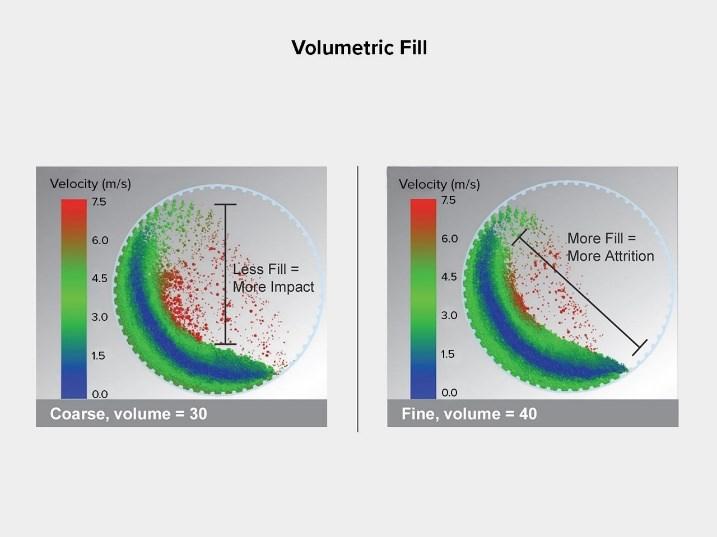
Bearing pressure does not account for ore size changes (interstitial spacing affecting density), and this measurement is also confused by changes in oil temperature, mill direction, liner wear, and mill density.
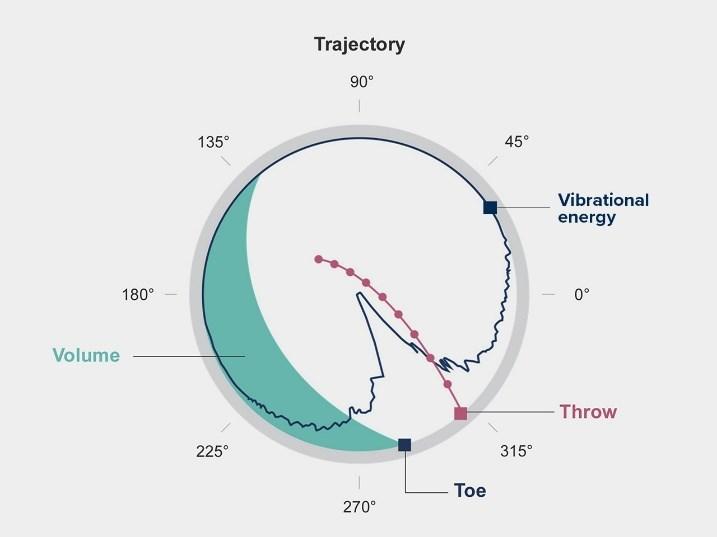

LoadIQ utilises cutting edge mill scanner smart sensor technologies to bridge these gaps and accurately measure volumetric filling and ore trajectory in real time. We then use large scale data analysis and real time smart sensor data to correlate maximum breakage rates to the incoming ore types as well as the current liner profile.
Maximum efficiency Liner wear is directly correlated to the ore trajectory in a grinding mill for a given RPM. As the liners wear, the ability to strike the toe at higher volumetric fills may not be possible. In cases where this is true, the volumetric load will automatically be decreased until the toe is impacted, thus restoring maximum efficiency. Conversely, with a new set of liners, the trajectory at high RPM will likely cause excessive liner strikes. In these cases, LoadIQ automatically reduces the maximum allowable RPM such that the cascading ore is impacting the charge toe.
4 | MER Today Winter 2022
Volumetric Fill
Article provided by:
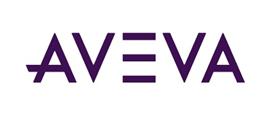
Title: Increasing asset reliability the mining industry through digital strategies

Executive summary
Mining companies face many challenges. Among others, demand shifts and market fluctuations, increased environmental and safety regulations, and a retiring workforce represents significant challenges for the industry. By transforming the way their teams work through the adoption of digital tools that can leverage all available industrial data and turn that information into innovative insights, mining companies can ensure reliable, safe, and efficient operations. To accelerate this transformation, mining companies can undertake digital initiatives, powered by the latest advances in cloud and artificial intelligence (AI).
Digital data augment human insight in new ways. Predictive and prescriptive analytics capabilities can only be applied when there is automatic capture of digital data. Artificial intelligence and machine learning can aid operators in analyzing vast amounts of data to make informed decisions. Despite market disruptions and volatility, mining companies are finding success by adopting new ways of working collaboratively in digital environments. These new ways of working, based on common data platforms and global visibility, help companies become more profitable, safe, and sustainable.
How digital work transformation unlocks reliability and safety
The mining industry is asset intensive and, unfortunately, many of those assets are aging and expensive to repair. Unreliable assets not only pose a significant risk, but they can also affect availability, quality, and production results. When combined with increasing regulations, mining operations must make strategic decisions to improve safety performance, maintenance strategies, and overall asset health and performance. A successful asset optimization strategy starts with visibility into performance and that starts with an industrial information infrastructure AVEVA PI System. Using a combination of real time and historical data and advanced tools, teams can quickly identify performance issues, prioritize maintenance needs to maximize reliability and availability, extend the asset lifecycle, and make repair versus replacement decisions By taking a proactive approach to maintenance and repair decisions, mining operations can keep safe and reliable operations while significantly minimizing maintenance costs.
To succeed in the future of the industry, mining operations must move to a proactive maintenance approach. A comprehensive maintenance program includes several approaches that are appropriate for various types of equipment. For more complex and critical assets, a predictive strategy is the most appropriate. Predictive Maintenance (PdM) relies on the continuous monitoring of asset performance through sensor data and prediction engines to provide advanced warning of equipment problems and failures. PdM typically requires a predictive analytics software solution for real time insights of equipment health and performance. Figure 1 presents the maintenance strategy maturity pyramid, indicating where PdM fits among the different maintenance approaches.

5 | MER Today Winter 2022
Figure 1. Maintenance Strategy Maturity Pyramid
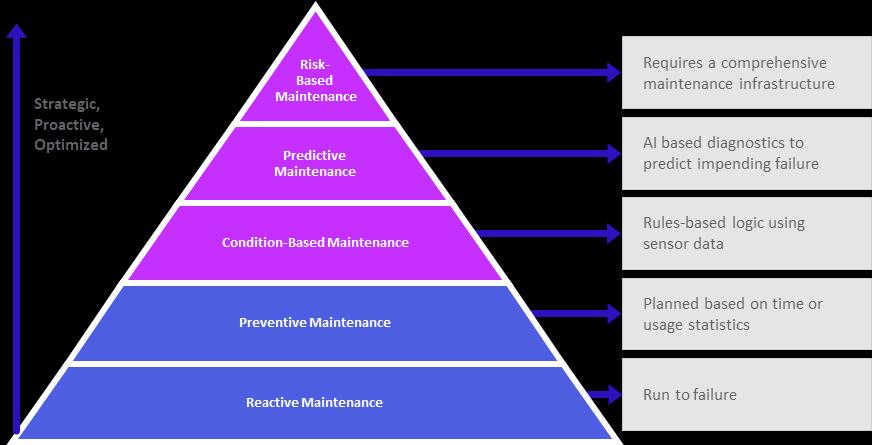
Predictive Analytics
According to research by ARC Advisory Group, only 18 percent of assets have a failure pattern that increases with use or age (Rio, 2015). This means that preventive maintenance alone is not enough to avoid failure in the other 82 percent of assets. Instead, a more advanced approach is required. Predictive analytics software uses historical operational signatures for each asset and compares them to real time operating data to detect subtle changes in equipment behavior. The software can identify changes in system behavior well before the deviating variables reach operational alarm levels, creating more time for analysis and corrective action. Although the number of companies taking full advantage of predictive maintenance is growing, the proportion remains relatively small. For many potential users, the complexity and cost of these systems has been an obstacle. However, as technology continues to advance, the price of sensors and other smart devices continues to decrease. In addition, some advanced predictive analytics solutions like AVEVA Predictive Analytics do not require special instrumentation. Instead, they rely on existing sensor data for input into the modeling and predictive process.
AVEVA Predictive Analytics supports PdM and improves performance by providing early warning notification of equipment issues and potential failures. The AVEVA Predictive Analytics software is based on advanced predictive modeling that use Artificial Intelligence and machine learning technology. Existing machinery sensor data are input into the software’s advanced modeling process and compared to real time operating data to determine and alert upon subtle deviations in equipment behavior. The model learns an asset’s unique operating profile to clearly identify minor changes in its operation before fixed operational alerts are triggered (illustrated in Figure 2). Once an issue has been identified, the software can assist in root cause analysis and provide fault diagnostics to help the user understand the reason for and significance of the problem.

6 | MER Today Winter 2022
Figure 2. Predictive analytics model comparing expected equipment behavior with deviated actual behavior
When implementing a predictive analytics solution, the assets to monitor based on criticality, equipment history, and site goals need to be identified. A phased approach is used for implementation, and assets that have had continuous problems, directly impact availability, or are likely to have a quick return on investment are usually prioritized. Solutions can vary widely in complexity and difficulty, which has been a challenge in mining, however AVEVA Predictive Analytics is an intuitive system designed so that the user can easily configure it to monitor different types of equipment.
The expected benefits from a predictive analytics implementation are:
Reduce unscheduled downtime
Improve asset reliability and performance
Reduce maintenance costs

Increase asset utilization
Improve safety
Optimize labor productivity
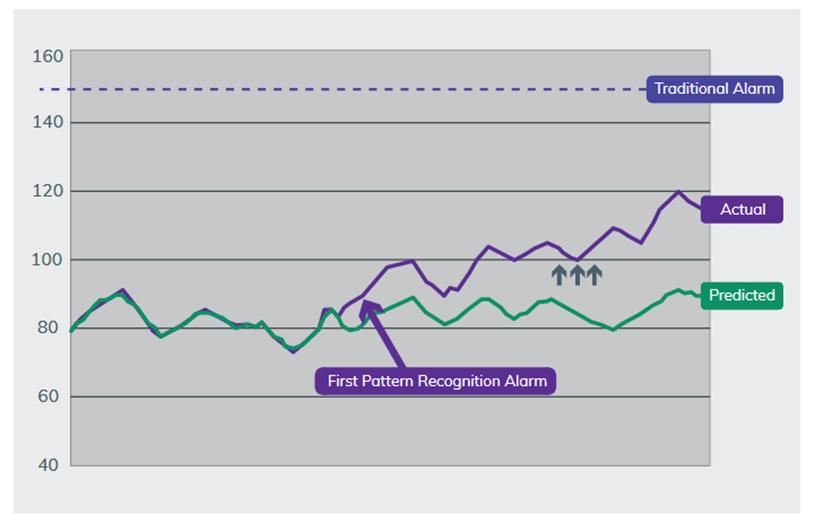
Optimize asset strategy
Capture and transfer knowledge
Case Study Nexa Resources 2
Nexa Resources is a global non ferrous metals mining and metallurgy company. The Cajamarquilla smelter, which is owned by Nexa CJM, is located in Peru and began operation in 1981. It is currently the largest zinc smelter in Latin America and the sixth largest zinc smelter in the world in 2022, according to Wood Mackenzie.
7 | MER Today Winter 2022
The Cajamarquilla site has the goal of increasing availability of critical assets and reducing waste and production losses. To accomplish this goal, the Nexa team implemented a combination of an operational data management infrastructure (AVEVA PI System) combined with predictive analytics models (AVEVA Predictive Analytics) on several assets: 3 pumps, 1 sectional cooler, 1 ball mill, 4 SO2 blowers (process and mechanical models), 3 drying towers, 1 intermediate absorption tower, and 1 final absorption tower. Twelve predictive analytics models based on machine learning were able to overcome the challenge of having limited sensors and instrumentation, providing early warning notifications and diagnostics of equipment problems before they happen. The insights provided a reduction of reactive emergency maintenance procedures and an improvement in equipment reliability. This is first implementation of AVEVA Predictive Analytics in zinc industry, and it resulted in 75% reduction in unscheduled downtime hours. Multiple benefits were generated from this first project:
75% reduction unplanned downtime
Improved asset reliability
Generated early warnings and diagnostics of equipment problems
Reduced maintenance expenses and the need for emergency purchases for maintenance procedures

Eliminated waste and production losses
Conclusion
Through predictive analytics solutions, the massive amounts of data available today can be fully explored by mining personnel. Early warning detection and diagnosis of equipment problems promotes more effective work since early warning notifications are provided. With more lead time to plan necessary maintenance, potential equipment failure is avoided, improving performance. Mining organizations can move from reactive to proactive maintenance by leveraging predictive analytics solutions to spend less time looking for potential issues and more time taking actions to get the most out of every single asset. Companies can monitor critical assets, both fixed and mobile, to identify, diagnose, and prioritize impending equipment problems ~ continuously and in real time. Mining workers become enabled to make decisions that have a significantly positive impact on throughput, recovery, equipment reliability, availability, and safety.
References
1 Rio, Ralph (January 2015). “Proactive Asset Management with IIoT and Analytics,” ARC Advisory Group Retrieved from: https://www.arcweb.com/blog/proactive asset management iiot analytics
2 Nexa Resources Case Stuy (November 2022). “Presentation: Nexa Resources: PI System and Predictive Analytics for Zinc Industry”. Retrieved from: https://resources.osisoft.com/presentations/nexa resources pi system and predictive analytics for zinc industry/
8 | MER Today Winter 2022
The mechanics of a new era in maintenance

A combination of hands on expertise and high tech tools offers big wins to operators working to keep on top of downtime
By Alexandra Lopez Pachec
but the journey to that revolutionary new approach has begun.
Ahead of the curve
Teck Resources has added machine learning to its mobile equipment monitoring to help better identify patterns that may predict failure. Courtesy of Teck Resources
Teck Resources recently launched a machine learning initiative to improve its preventive and condition based mobile equipment maintenance program. Goldcorp is currently speaking with potential partners and planning to do the same in the very near future. There is a lot of buzz in the mining industry these days about the potential for artificial intelligence applications for maintenance of mobile equipment.
“Two years ago, not many people were asking about machine learning and predictive analytics,” said Colin Donnelly, vice president of product management at Dingo Mining, a company that provides condition management and predictive maintenance of equipment for mining companies across the globe. “Now it’s the first thing they ask us.”

Miners are hoping new artificial technologies can connect all the onboard and sensor data points on equipment to map out a far more effective approach to condition based maintenance. It is in its early days still,
Teck Resources has had a mobile equipment monitoring program since 2011 to track the health of its haul trucks at its steelmaking coal operations. “Across our fleets, we collect 1.5 billion data records from [the equipment’s] sensors every 24 hours,” said Chris Stannell, a spokesperson for the company. “The program involves reviewing this data to identify failing components so that maintenance can be triggered earlier than without the program. This reduces costs and increases asset uptime.”
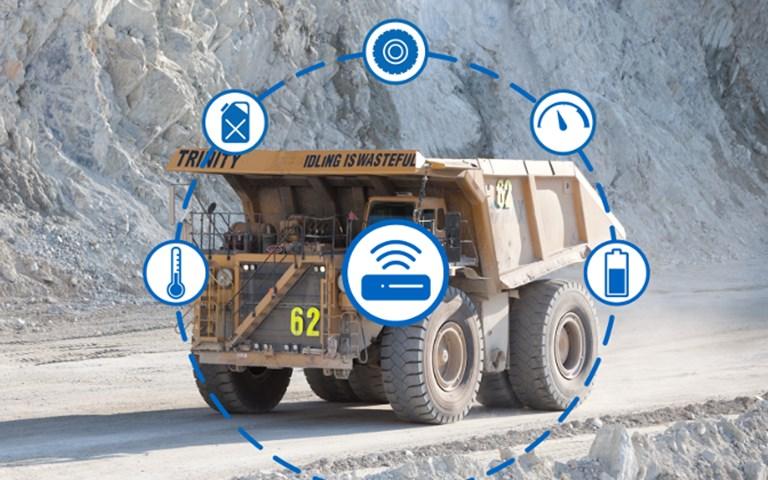
Now, in partnership with Google Cloud and global IT consulting company, Pythian, Teck has also deployed machine learning algorithms that scan through millions of data points from its Komatsu 930E haul truck fleet at its Fording River, Greenhills, and Elkview steelmaking coal operations in British Columbia’s Elk Valley region.
“The failures that this algorithm identifies are not typically discernible to a human looking at the data,” said Stannell. “To illustrate the point, consider that the system will give various intermittent warnings that come and go as a haul truck is operated. Some of these warnings don’t mean anything on their own; however, the pattern of warnings can indicate if there is a real underlying issue or not. The algorithm makes sense of these patterns and informs us of the risk of failure.”
9 | MER Today Winter 2022
Ryan Bergen, Editor in chief CIM Magazine
A complex and moving problem
It is no wonder the industry is hoping software and machine learning algorithms will come to the rescue or at least play a big part in it. Mobile equipment maintenance is a highly complex and expensive challenge. In a single mine, the costs can easily run in the hundreds of millions of dollars annually, not including the added cost of unscheduled downtime.


The factors that can result in sudden failures are as dynamic as the weather or the ground conditions on a mine site across the seasons. As well, the equipment and many of its components face several potentially damaging pressures and forces every hour of use. “As equipment has grown in size, these have multiplied”, said Tim Joseph, a mining consultant and former Associate Dean, Faculty of Engineering at the University of Alberta’s school of mining and petroleum engineering. Consider the six tires of a haul truck that carry the load of 300 plus tonnes of material in addition to the truck’s weight as it travels down a roadway, bouncing and pitching and rolling. “That movement doubles or triples the impact of the load on the tires,” he said. As a result, component failure fatigue has increased over the last decade and a half.
During the last ten years, thanks to sensor and onboard technologies as well as software tracking systems such as Dingo’s Trakka, the opportunity for condition based maintenance has opened up.
This approach to maintenance tracks the condition of equipment daily, monitoring temperatures, pressures, fuel emissions, and the quality of fluids passing through the system as well as the efficiency of the burn on the fuel. Instead of servicing and repairing equipment based on assumptions and averages that ignore the equipment’s actual condition, mining operations can maintain the equipment’s availability and health based on the actual readings
and operating conditions. This opens the door to pre emptive repairs and greater avoidance of major failures in some cases.
“Sometimes you can replace a $10 part and save a million dollar failure,” said Jami Dwyer, a consultant and former head of the predictive maintenance project at Barrick’s digital transformation team. Other times, the savings come from avoiding unnecessary work.
“You don’t have to replace parts automatically after say 8,000 hours,” said Donnelly. “You can get 20,000 hours from the part if we treat the equipment right and pay attention to the data. And basically make the right decisions.”
“To some extent, everyone is doing at least a bit of condition based monitoring”, said Dwyer. But a bit does not get the same results as a comprehensive, condition based monitoring system, which involves collecting and analyzing a lot of data and records.
Connectivity
One of the most critical tools for an effective condition based monitoring program, let alone an artificial intelligence one, is network connectivity. Without that, all the valuable data from the sensors and onboard systems cannot be gathered and analyzed for real time, or at least daily, monitoring.
“For areas where you have intermittent connectivity issues, condition based maintenance starts with the ability to collect real time or near real time data,” said Kirk Petroski, president and CEO of Symboticware, which has developed a telemetry technology that collects data in real time and can send the data forward when a network connection becomes available, thus eliminating data gaps.
10 | MER Today Winter 2022
Ryan Bergen, Editor in chief CIM Magazine
He added, “consistent, high frequency, real time data enables condition based and future machine learning applications.”
There are a number of reasons why Goldcorp is now looking at the possibility of adding machine learning to its mobile equipment maintenance program but, according to Luis Canepari, the company’s vice president of technology, “we now have the backbone and the connectivity in our mines that is allowing us to capture the data from the fleet in real time. We are starting to use telemetry systems in several of our mines that is enabling us to collect sensor data from our mobile fleet, regardless of the manufacturer, which is the foundation for a proactive condition monitoring program.”

Human and machine interface
Dingo does not simply offer tracking and analytical software. It also uses a team of human reliability experts to analyze the data and recommend actions. “The reason we’ve done that is we have had experience providing the software to large mining companies. We saw one flourish and one be in trouble,” said Donnelly. “We found the difference was due to the application of the software. Software doesn’t do anything if you don’t use it correctly to make the right decisions.”

In fact, the most critical tool today for condition based and predictive maintenance continues to be a human brain, well trained to interpret the sensor data, which contain a far bigger story than just the equipment’s vital signs. Based on onboard sensor data, said Joseph, it is possible to deduct such things as the road conditions and structural fatigue in the equipment and develop strategies to better adapt the operation of even mammoth sized equipment to avoid failures. “I don’t even have to look at the road. I can get all that from the onboard system,” he said.
As more of a mine's equipment and sensors are connected to a
Effective condition based management, said Joseph, “is also about examining and tracking the operating conditions. The operating circumstances are giving rise to the deficiencies and unknowns when it comes to maintenance. We are looking at not just the machine itself but the operation conditions. The real key is having a very good understanding of interactions between the equipment and the ground.”

11 | MER Today Winter 2022
Ryan Bergen, Editor in chief CIM Magazine
network, the potential to analyze and improve preventive maintenance continues to grow. Courtesy of Goldcorp
Editor in chief CIM Magazine

Whether it is to develop algorithms or interpret sensor data, Joseph and Dwyer said they believe that taking full advantage of new technologies for condition based mobile equipment maintenance will require building a better trained workforce that combines technology and mechanical knowledge.


“We are seeing the adoption of condition based monitoring technologies at a faster pace than we’ve ever seen before,” said Joseph. “The challenge is the educational institutions are still teaching the way they taught 20 years ago. Grads are walking into operations as instrumentation technologists and they are lost.”
The mining industry is at a breakthrough moment in terms of predictive analytics technologies, said Dwyer, and with that will come changes. “I think there needs to be people in the industry who are able to marry the mechanical and computer analytics together,” she said.
On the other hand, added Dwyer, “sometimes it’s pretty hard to find a really good qualified mechanic for a mine to operate at maximum efficiency. I think if you can leverage the knowledge of a master mechanic and make it accessible to anyone, that will be a big win for the future.”
The future
Goldcorp has embarked on a growth and innovation journey, partnering with key technology and mining suppliers and service providers “to accelerate the pace of innovation and enable our mines to achieve our strategic objectives,” said Canepari.
In the not too distant future, however, he envisions hundreds of thousands of sensors at Goldcorp connected in real time through its systems and a team of maintenance schedulers and reliability engineers enabled by the new technologies. “They will analyze all the data from a data science perspective as well as from a mechanical perspective. They will be looking for patterns, so we will be able to predict when an equipment is going to fail, not only from the equipment sensors but also all the other aspects, such as how the operator is driving it, the environment and integrated weather data,” said Canepari. “And how a machine is behaving in a particular mine and affected by all these factors benchmarking it against all our mines. Once you have all the holistic data with the computer power we have today, the sky’s the limit.”
The Strength of the MER Society
The strength of the MER Society to reach and excel in its objectives is always due to the strong sense of duty and service, commitments, efforts and work of the general members and the members of the Executive Committee. MER professionals continuously provide knowledge, expertise, guidance, leadership, their time and most importantly, care and due diligence, to ensure an ongoing improvement of the mining sector and the global society.
12 | MER Today Winter 2022
Ryan Bergen,
CIM MER OBJECTIVES
The objectives of the Maintenance, Engineering and Reliability (MER) Society are to:

provide a forum for Society members to share their knowledge and seek information on maintenance and engineering topics within the Society, throughout the rest of CIM, and with external bodies; promote the improvement of maintenance and engineering standards through peer review of technical papers and public and private industry presentations of technology and best practice topics; encourage individuals to join the mining industry through the awarding of scholarships; recognize engineering and maintenance excellence, participation, and contribution through awards; serve as a resource and support body to mine operating personnel, consulting engineers and designers, and suppliers of mine equipment; and improve safety and minimize risks through the application of engineering principles and maintenance practice in the mining industry by promoting the adoption of approved methods and devices.
Eng. Disciplines covered by the Society: The engineering disciplines covered by the Society are Mechanical, Civil, Electrical, Electronics, Instrumentation, Chemical, Computer Sciences, Material Sciences, Manufacturing and related disciplines
Article source MERS Web site https://societies.cim.org/mers/en/
CIM MER Historical Background
In 1898, the organization, now known as the Canadian Institute of Mining, Metallurgy and Petroleum (CIM), was incorporated through an act of the Parliament of Canada. Since its inception over a century ago, the CIM continues to grow while sustaining its vision of being the leading and preferred technical society providing “World class professional development, networking and knowledge sharing” for everyone from students to all professionals working in the minerals, metals, materials, and energy industries. The CIM now boasts close to 15,000 members, of which more than 1,600 are international members in 30 Branches and 10 Societies (Professional Groups or Divisions) covering all of Canada and expanding globally.
In 1961, the CIM Council approved formation of the “Mechanical Electrical Division”. In 1984, the name was changed to the “Maintenance and Engineer Division”. During the March 2013 CIM Council meeting, the name was again updated to the “Maintenance, Engineering and Reliability Society (MER)”. During the past 50 years of existence, the Society name has been updated to reflect a growing mandate due to the increasing technology, innovation, research, and complexity in all aspects of mining, milling, smelting, and refining processes.

13 | MER Today Winter 2022
CIM Centennial Scholarship


Sussan Alam
Sussan Alam was born on June 27, 2001, in Mississauga, Ontario. She is currently a second year undergraduate student in Electrical and Computer Engineering at the University of Waterloo, Ontario. Upon graduation, she plans to pursue a career in the mining industry to modernize mining activities using machine generated big data, Internet of Things, and data analysis techniques for predictive maintenance and increased safety, reliability, and productivity of mining operations. Being a female engineer, she wants to be an industry leader in mining and wants to be a role model by increasing the representation of women in mining.
Edward Melville (Ed) Patton Scholarship
Zhanbolat Magzumov
Zhanbolat Magzumov is from Kazakhstan. He obtained a Bachelor’s degree in Metallurgical Engineering in Russia, a master’s in mining engineering from Nazarbayev University in Kazakhstan and is now pursuing a PhD at McGill University. He loves reading books, playing football, and watching and playing European football and Formula 1. He is excited to pursue his mining career and is grateful to be chosen as a scholarship winner.

Ken Hildebrant Memorial Scholarship

Hannah LeCocq
Hannah LeCocq is currently pursuing a Bachelor of Applied Science in mining engineering, at Queen’s University’s Robert M. Buchan Department of Mining. This past year she completed an internship at an underground gold mine working in ventilation, ground control, and production. She is passionate about safety, efficiency technology and current opportunities for growth in the mining Industry. Upon graduation she looks forward to a long career in mining.

14 | MER Today Winter 2022
CIM MER Director Education
Dean Millar, PhD, DIC, FIMMM, CEM Laurentian University
Ken Hildebrant Memorial Scholarship

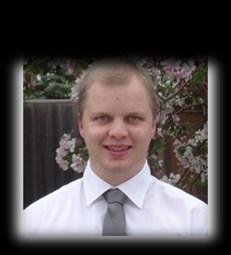
 Max Schreckenbach
Max Schreckenbach
Max Schreckenbach is a 4th year student in the B.Sc. Geological Sciences (Hons) program at the University of Manitoba. Since he was a child, he loved the outdoors, and spent many summers hiking and camping all over North America with his family. He has held three geology summer student jobs: one with a geological survey, one with a mining company, and one conducting academic research. He is actively pursuing a career in the mining industry.
MER Memorial Scholarship Meet Bhagat
Meet Bhagat is currently a first year M.Eng. Engineering Science student at Laurentian University, specializing in Mine Mechanical Engineering. He received a bachelor degree in Mechanical Engineering from Gujarat Technological University, Ahmedabad, India. He is interested in future mining technologies that can enhance the efficiency and safety of mining.
MER Memorial Scholarship Nasim Yavari
Nasim Yavari is an international student at Laurentian University with a Chemical Engineering background. Currently, she is working on her mas-
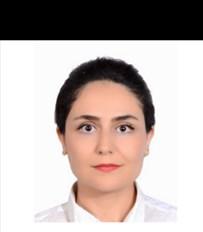

ter’s thesis in the field of biological fixation (capture) of mineral off gas CO2 using microalgae collected from mine sites in Sudbury, Ontario to address one of the most serious environmental issues: global warming. Since she noticed that mining is responsible for 4 7% of greenhouse gas emissions globally and Sudbury is known as the mining capital of the world, she became enthusiastic about developing a sustainable and environmentally friendly technology for CO2 fixation that does not cause secondary pollution. The method she is working on is also able to synthesize various biomolecules, like carbohydrates, lipids, and proteins, which can be used as biofuels, sources of food or pharmaceutical products. Her research is conducted in collaboration with Sudbury Integrated Nickel Operations, A Glencore Company. Having become involved in this project, she has developed a passion for fostering her career within the mining industry.
MER Memorial Scholarship Kaitlyn de Morée van Lierde
Kaitlyn de Morée van Lierde is currently a fourth year Geophysics student at Carleton University. She has always had a keen interest in geology, which began with the collection of her first rock sample at the age of three. In her first year of university, she began working with Dr. Richard Ernst and the Large Igneous Provinces Commission. To date, she has been part of projects of a wide range of topics, from the Commission’s large igneous province geochronology database to paleomagnetic reconstructions. Her Honour’s thesis involves gravitational and magnetic modelling of mafic and ultramafic intrusions around the Mackenzie large igneous province plume center near Victoria Island in the Northwest Territories. As the
15 | MER Today Winter 2022
CIM Journal
The CIM Journal is a quarterly digital publication for peer reviewed technical papers available to all CIM National Members for free and to non members for a fee. Papers cover all facets of the mining and minerals industry, including geology, mining, processing, metallurgy, materials, maintenance, environmental protection and reclamation, social responsibility, mineral economics, project management, health and safety, risk management, redevelopment, operations, and regulatory practices and issues. (Article updated by Janice Burke)
We also publish periodic special themed issues. The first issue of 2023 will be a Special Issue, Innovations in Underground Ventilation, containing invited papers from the North American Mine Ventilation Symposium (Editors A.P. Sasmito, McGill University and P. Tukkaraja, South Dakota Mines).
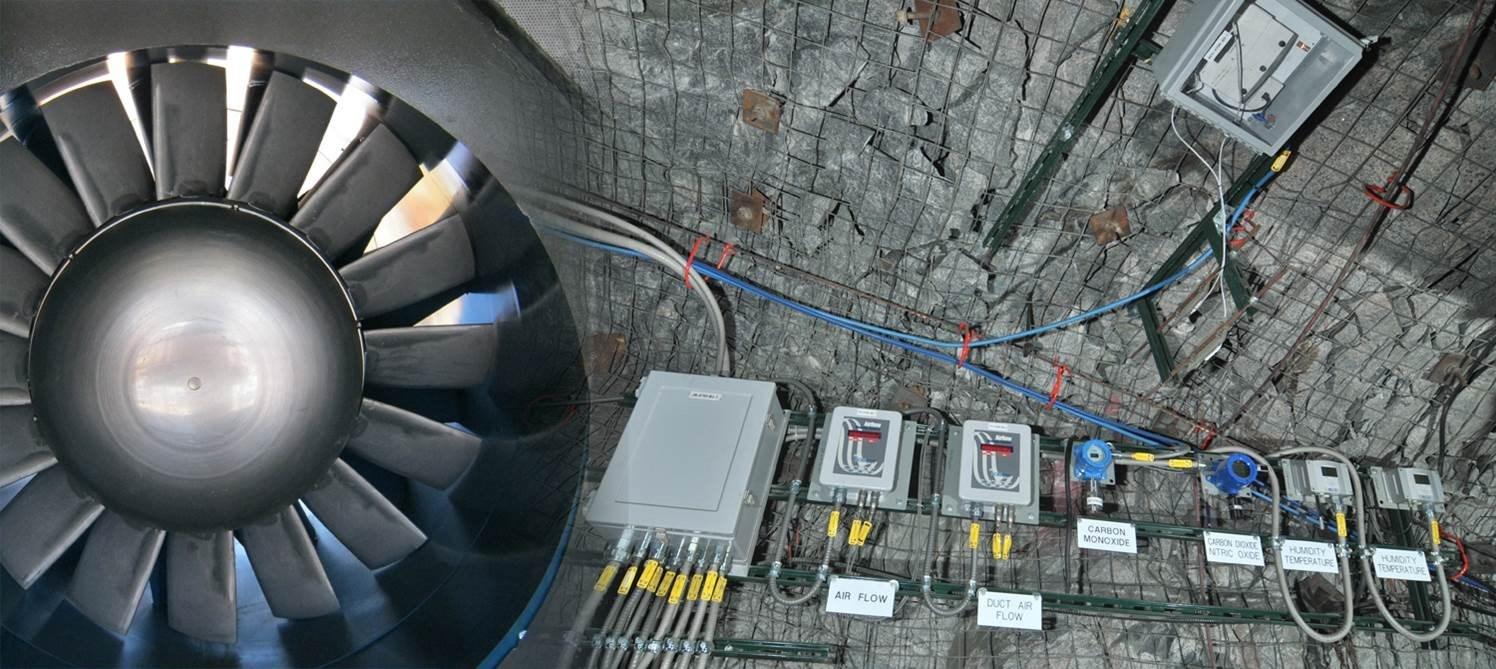
As of 2020, the CIM Journal is being published by Taylor & Francis. The editorial process remains the same. CIM National Members continue to have free access to the journal, but new papers are now hosted on the CIM Journal site at Taylor & Francis. Papers published prior to 2020 can be found on the CIM Technical Paper Library or on OneMine.
Technical Publication Committee (TPC)
Source: CIM TPC Web site
The CIM TPC comprises CIM staff and volunteer peer review Editors and Associate Editors from 10 technical Societies, who come from the public and private sectors across Canada. The TPC encourages authors to submit high quality papers to the quarterly CIM Journal, recruits volunteer peer reviewers with the expertise to conduct thorough and professional reviews of the technical content of submitted papers, assesses reviewer recommendations, and renders review decisions on paper acceptance. The TPC optimizes the flow of technical papers through peer review and maintains the high quality standards of CIM Journal content.
CIM Journal welcomes original papers in English or French. Submissions are assigned to a CIM Technical Society for double blind peer review. Our authors and audience are international in scope. Topics covered in CIM Journal include geology, mining, processing, maintenance, environmental protection and reclamation, social responsibility, mineral economics, project management, health and safety, risk management, research and development, operations, and regulatory practices and issues.
Read the instructions for authors then create an account at Taylor & Francis.
TPC Founding Editor: Chuck Edwards, P.Eng., FCIM, Extractive Metallurgy Consulting
MER Peer Review Editor: Agus Sasmito, Ph.D., (agus.sasmito@mcgill.ca) McGill University

16 | MER Today Winter 2022
Abstracts from Articles peer reviewed by MER & Published
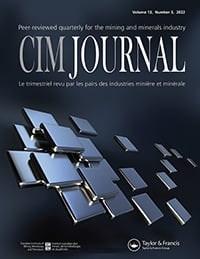
Agus P. Sasmito, PhD, Peer Review Chair, MER; Editor, CIM Journal (agus.sasmito@mcgill.ca)
Janice M. Burke, MSc, Editorial Coordinator, CIM Journal
MAINTENANCE, ENGINEERING AND RELIABILITY (MER)

A discussion on underground mine ventilation design considerations for diesel vs. battery electric mobile equipment
N. Saeidi & C. Allen
Published online: 23 Aug 2022
ABSTRACT
The total air volume requirements of underground mining operations are determined based on several factors, including mining method, ambient air temperature, rock type, and mobile equipment emissions. With the introduction of larger battery electric mobile fleets (i.e., large trucks and scoops) to replace existing diesel fleets in underground hard rock operations, mobile equipment emissions become mostly limited to the heat generated. Battery electric mobile equipment has the potential to reduce the air volume needed to ventilate an underground mine. However, air velocity is an important factor to ensure that the air reaches the working areas of the mine economically while minimizing entrainment of large contaminant particles, maximizing dilution of fine particles, and maintaining a safe air velocity for human occupancy. This paper reviews key parameters to support air volume determination and, using an example, discusses the influence of battery electric vehicles on determining the total air volume.
MAINTENANCE, INGÉNIERIE ET FIABILITÉ (MIF)

RÉSUMÉ
Les besoins en volume d’air total des exploitations minières souterraines sont déterminés en fonction de plusieurs facteurs, y compris la méthode d’extraction, la température de l’air ambiant, le type de roche et les émissions d’équipement mobile. Avec l’introduction de parcs de véhicules électriques à batterie plus gros (c’est à dire gros camions et bennes) pour remplacer les parcs de véhicules diesel existants dans les opérations souterraines en roche dure, les émissions d’équipement mobile deviennent principalement limitées à la chaleur générée. L’équipement mobile à batterie électrique a le potentiel de réduire le volume d’air nécessaire pour ventiler une mine souterraine. Toutefois, la vitesse de l’air est un facteur important pour s’assurer que l’air atteint les zones de travail de la mine de façon économique tout en minimisant l’entraînement de grosses particules de contaminants, en maximisant la dilution des particules fines et en maintenant une vitesse de l’air sécuritaire pour l’occupation humaine. Ce document passe en revue les principaux paramètres à l’appui de la détermination du volume d’air et, à l’aide d’un exemple, traite de l’influence des véhicules électriques à batterie sur la détermination du volume d’air total.
Submit
an article Journal Homepage
MER Society of CIM Peer Review Team
17 | MER Today Winter 2022
MERS@cim.org
MER Executive 2022 2023

Chair, Dominique Privé
1 st Vice Chair, Martin Provencher
2 nd Vice Chair, Lee Weitzel
Administrator /

Treasurer, Dick McIvor
CIM Convention & Expo

Apr 30 May 3, 2023, Montreal, QC “Building Trust to DECARBONIZE the World”

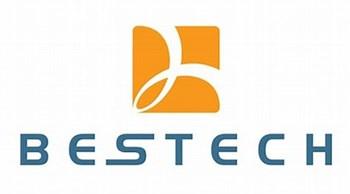
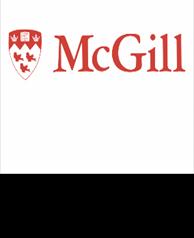
International Conference on Hoisting and Haulage August 13 16, 2023, Montreal, QC


Copy Editor: Janice M. Burke, MSc (jmburke@cim.org)
Dominique Privé, Martin Provencher,
SOME CIM MER SOCIETY SUPPORTERS & PATRONS
18 | MER Today Winter 2022



































